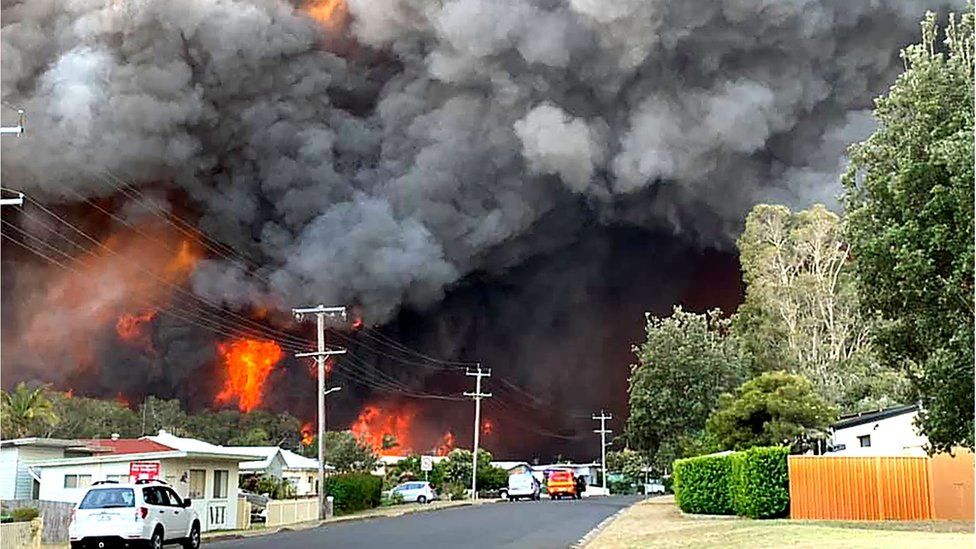Professional Insights: Why Every House Owner Demands a Thorough BAL Report
Professional Insights: Why Every House Owner Demands a Thorough BAL Report
Blog Article
Navigating Bush Fire Protection Regulations With BAL Report
Central to this endeavor is the Bushfire Attack Degree (BAL) report, a crucial document that examines the prospective exposure of a property to bushfire. By diving into the intricacies of BAL assessments and their effects for developing compliance, stakeholders can proactively take care of bush fire dangers and safeguard homes against possible risks.
Recognizing Bush Fire Defense Regulations
To effectively navigate the intricacies of bush fire security laws, it is necessary to have a clear understanding of the controling standards and requirements in position. Shrub fire security laws are important for safeguarding buildings and lives in locations vulnerable to bushfires. These policies develop the standards and protocols that building proprietors must abide by in order to alleviate the dangers related to bushfires.

Value of BAL Assessments
Recognizing the relevance of BAL analyses is critical in making certain compliance with bush fire protection laws and efficiently minimizing the risks connected with bushfires. BAL evaluations, which identify the Bushfire Strike Level of a residential property, are essential for creating proper bush fire defense steps customized to the details threat account of the site. By assessing elements such as plants kind, range to potential fire hazards, and slope of the land, BAL assessments offer useful insights right into the degree of danger a building faces throughout a bushfire occasion.

Implications for Structure Conformity
Navigating through structure compliance requirements according to BAL analyses is crucial for making certain frameworks are effectively strengthened versus the risks posed by bushfires. Structure compliance refers to sticking to the guidelines and requirements set forth to boost the security and resilience of structures in bushfire-prone areas. The ramifications of building conformity in regard to BAL assessments are substantial. Structures that fall short to satisfy the required conformity requirements are at a greater risk of receiving damage or destruction throughout a bushfire occasion. This not only endangers the owners but also poses a risk to Read Full Report the surrounding setting.
Making certain structure conformity entails mindful preparation, building, and upkeep to minimize the prospective influence of bushfires. It calls for a complete understanding of the BAL rating designated to the property and implementing the suitable steps to enhance its fire protection capacities.
Handling Bush Fire Threats Properly
Provided the crucial significance of building conformity in fortifying structures versus bushfire risks, effectively taking care of these dangers requires a comprehensive technique that prioritizes aggressive mitigation strategies. To start, carrying out extensive risk evaluations is paramount. Recognizing the particular susceptabilities of a property in regard to bushfires allows for customized danger mitigation strategies. This includes studying aspects such as the property's place, surrounding vegetation, topography, and dominating weather. Carrying out ideal greenery management methods is another key facet of reliable danger monitoring. Clearing flammable plant life, creating defensible areas, and ensuring appropriate upkeep can significantly decrease the danger of fire infecting the home. Spending in fireproof structure products and building and construction strategies can enhance the structure's ability to endure coal strikes and straight fire contact. Furthermore, practicing an emergency and developing reaction strategy is important for making certain that homeowners recognize just how to respond promptly and securely in case of a bushfire. By combining these proactive measures, home owners can efficiently manage bushfire threats and increase the safety of their frameworks and owners.
Practical Tips for Homeowners and Developers
Successfully managing bushfire dangers as a property owner or developer requires applying useful reduction strategies customized to the property's certain vulnerabilities and environments. One essential idea is to keep a well-maintained defensible area around frameworks, generally a minimum of 30 meters in risky areas. This space must be free from flammable greenery, particles, and various other flammable materials that might possibly sustain a fire. Furthermore, choosing fireproof building products can considerably enhance the residential or commercial property's capability to hold up against ember assaults and straight flame call. Ensuring that roof coverings, home windows, and wall surfaces are constructed or upgraded to meet Homepage relevant bushfire security requirements is crucial.
Furthermore, developing an emergency strategy and practicing evacuation drills with family members lessees, members, or staff members can conserve lives in the event of a bushfire. Remaining informed regarding regional fire risk scores, climate condition, and emergency notifies is likewise crucial for making prompt choices to secure life and residential property. Lastly, involving with local fire authorities, community teams, and specialists experienced in bushfire management can offer useful support and support in establishing detailed bushfire security strategies.
Conclusion
To conclude, navigating bush fire security policies with a BAL report is essential for ensuring building compliance and handling bush fire threats efficiently. Understanding the relevance of BAL evaluations and adhering to practical pointers can help why not try these out property owners and programmers mitigate the impact of bush fires. By adhering to these laws and taking essential safety measures, people can produce safer settings on their own and their neighborhoods.
Key elements of bush fire protection regulations include the Bushfire Strike Degree (BAL) evaluation, which figures out the level of risk a property faces from bushfires. BAL evaluations, which determine the Bushfire Assault Level of a home, are essential for developing suitable bush fire defense actions customized to the particular danger profile of the site. By reviewing aspects such as plants type, distance to prospective fire hazards, and slope of the land, BAL evaluations supply useful insights right into the degree of threat a building faces during a bushfire event.

In conclusion, navigating bush fire protection regulations with a BAL report is crucial for ensuring structure conformity and handling bush fire dangers efficiently.
Report this page